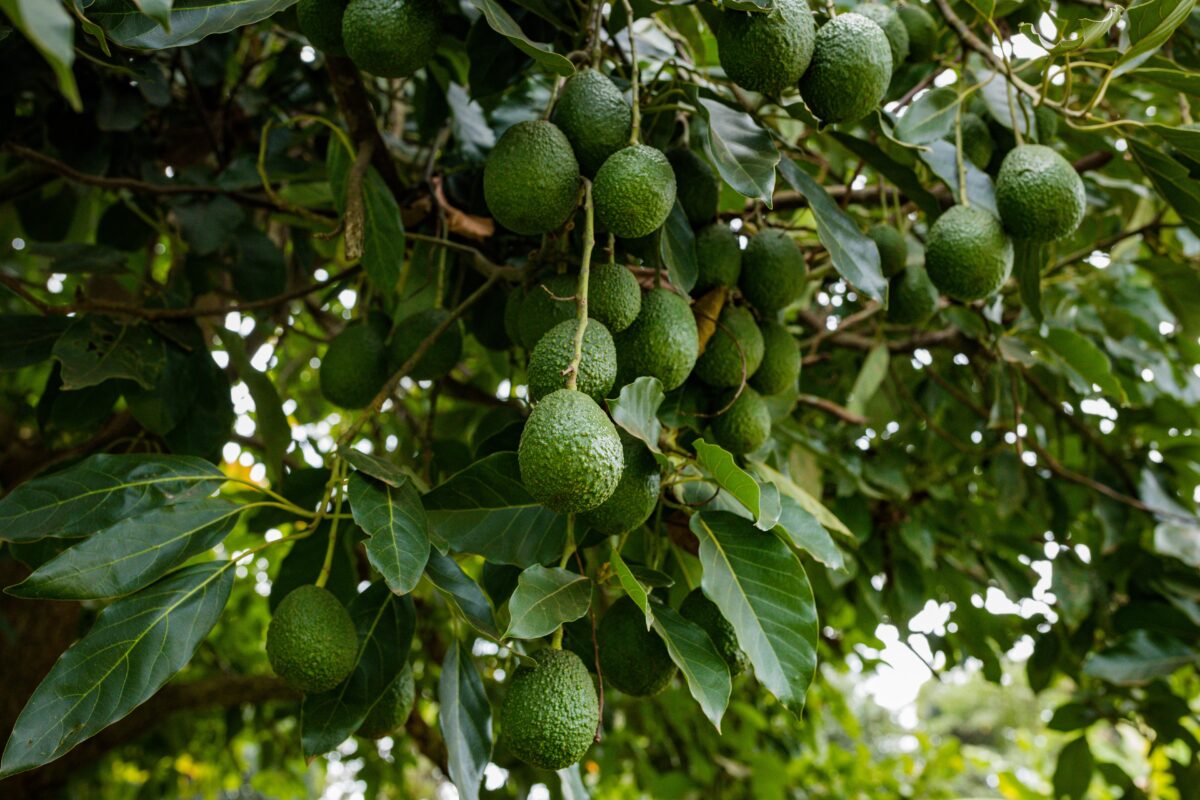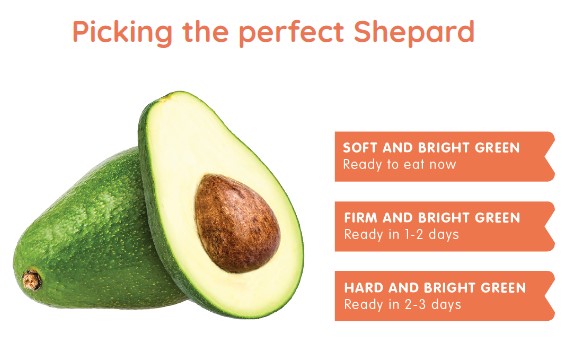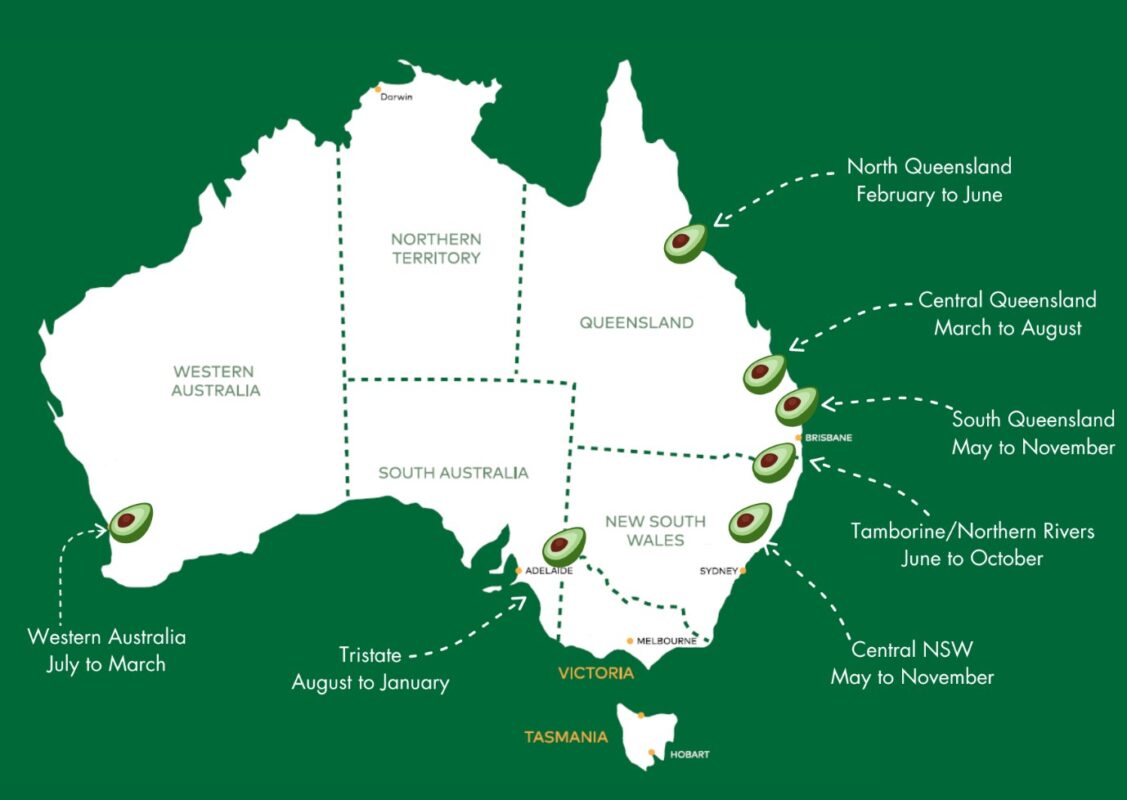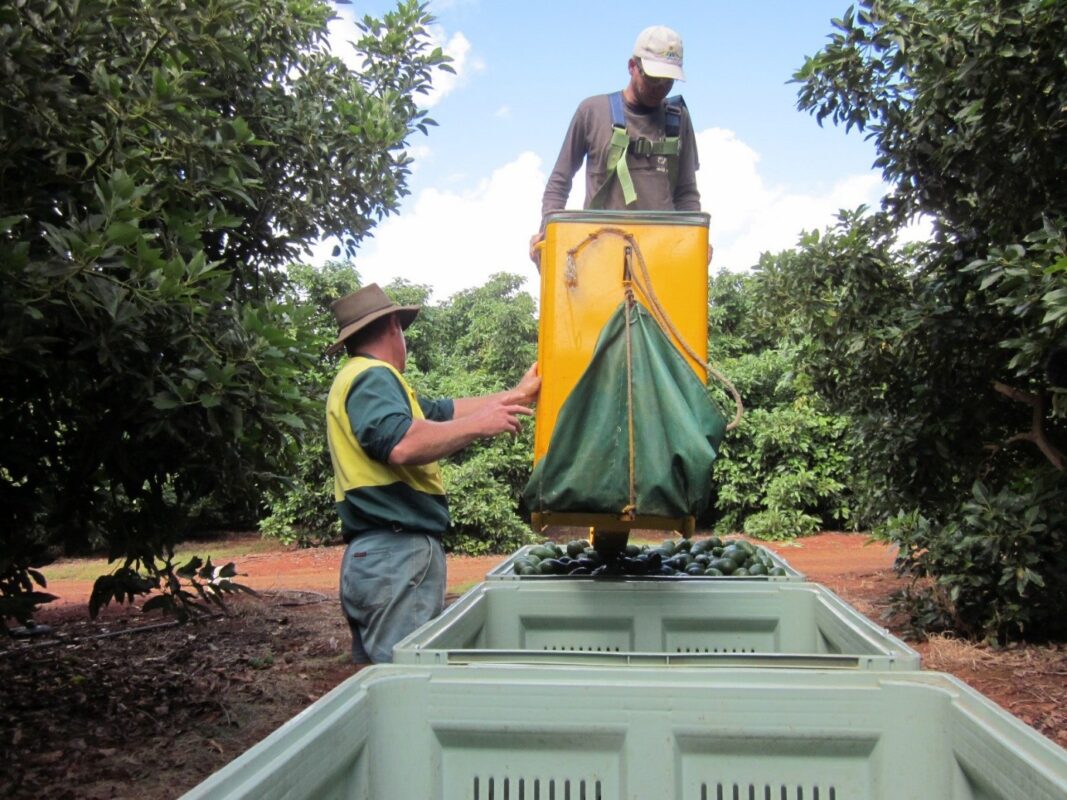Avocados have transcended from being just a fruit to a cultural icon, symbolising the essence of modern dietary trends and the famed 'smashed avo' brunch. Their buttery texture and nutritional profile have catapulted them to the forefront of health-conscious diets worldwide.
In Australia, this green gem has not only found its way into the hearts (and plates) of many but has also become a cornerstone of the country’s horticulture sector. Let’s take a look at the world of Australian avocados, where every harvest tells a story of culinary delight and agricultural expertise.

The Journey of Australian Avocados
The story of avocados is one of growth and adaptation.
According to Australian Avocados, the fruit is native to Mexico / Central America and first arrived in Australia in 1840 in seed form, and were planted in the Royal Botanical Gardens in Sydney. Further commercial imports of seed and plants continued over the next 110 years until by the late 1960’s when a developing Australian industry began to take shape. Varieties like Hass and Shepard have become household favourites, each with its unique flavour profile and season. The Hass variety, available almost all year, has become particularly dominant. Shepard avocados, harvested mainly in Queensland, shine through late summer and autumn.
Hass Avocados
Appearance: Hass avocados are known for their distinctive pebbly skin, which turns from green to a purplish-black as they ripen.

Shepard Avocados
Appearance: Shepard avocados are characterised by their smooth, green skin, which remains green even when ripe.

The Landscape of Avocado Farming
Avocado farming in Australia is marked by various distinct regions, each playing a significant role in the country’s overall production. Queensland is at the forefront, contributing 65% to the nation’s output, with Western Australia following at 18% and New South Wales at 11%. Thanks to Australia’s diverse climate, avocados are produced year-round, ensuring a steady supply of these creamy fruits.
In the 2022/23 season, the distribution of avocado production by region was as follows:
- North Queensland: Leads with 35% of national production, cultivating both Hass and Shepard varieties.
- Central Queensland: Contributes 24%, predominantly growing the Shepard variety.
- Sunshine Coast, Queensland: Accounts for 1% of production, focusing on Hass avocados.
- South Queensland: Also dedicated to Hass avocados, contributing 5%.
- Tamborine Qld/Northern Rivers NSW: Specialises in Hass avocados, making up 1% of production.
- Central New South Wales: A significant region for Hass avocados, contributing 8%.
- Tristate (border region of NSW, SA, and VIC): Primarily focused on Hass avocado production, accounting for 8%.
- Western Australia: Produces mainly Hass avocados, contributing 18% to national output.

A Day in the Life on an Avocado Farm
At farms like Simpson Farms in Childers, Queensland, a typical day for pickers and pruners starts as early as 7am, stretching up to 10 hours. Workers engage in various tasks, from operating cherry-pickers to hauling bins full of fruit. Packers, starting their day at 6am, are responsible for grading and preparing avocados for consumers. This hands-on experience is coupled with on-the-job training, ensuring quality and efficiency.
Employment Opportunities
The avocado industry in Australia offers a variety of roles that cater to different skills and preferences. Whether in the orchards or the packing sheds, each role is crucial in bringing this beloved fruit from the farm to the consumer. Here’s an overview of the key job types.

Harvesting Roles
- Field Workers: Harvesting avocados is a delicate yet demanding task. Workers, equipped with ladders, cherry-pickers and picking poles, carefully harvest the fruit, ensuring they are not bruised or punctured. Physical fitness is crucial, as pickers often carry bags weighing up to 20kg. The work is conducted outdoors, with workers braving various weather conditions.
- Cherry Picker Operators: Operate elevated platforms, requiring a driver’s licence and a head for heights.
- Tractor Operators: Transport equipment and produce – some farms will require a driver’s licence.
Packing Shed Roles
- Sorters and Graders: Assess the quality, size, and ripeness of avocados, a crucial step in maintaining high standards.
- Packers: Carefully pack avocados into trays or boxes, requiring attention to detail and a gentle touch.
- Forklift Drivers: With the appropriate licences, these workers move and organise avocado crates and pack materials.
- Quality Control Inspectors: Oversee the packing process, ensuring all avocados are up to standard before distribution.

Planning Your Avocado Harvesting Adventure
For those looking to join the avocado harvest, it’s important to plan ahead. The National Harvest Guide and the Harvest Trail Information Service offer valuable resources for understanding the seasonal patterns and job opportunities in the avocado industry.
For more information about job opportunities, seasons, and locations, contact the Harvest Trail Information Service on free call 1800 062 332, or visit the Harvest Trail website to start planning your next adventure in the lush avocado orchards of Australia.
